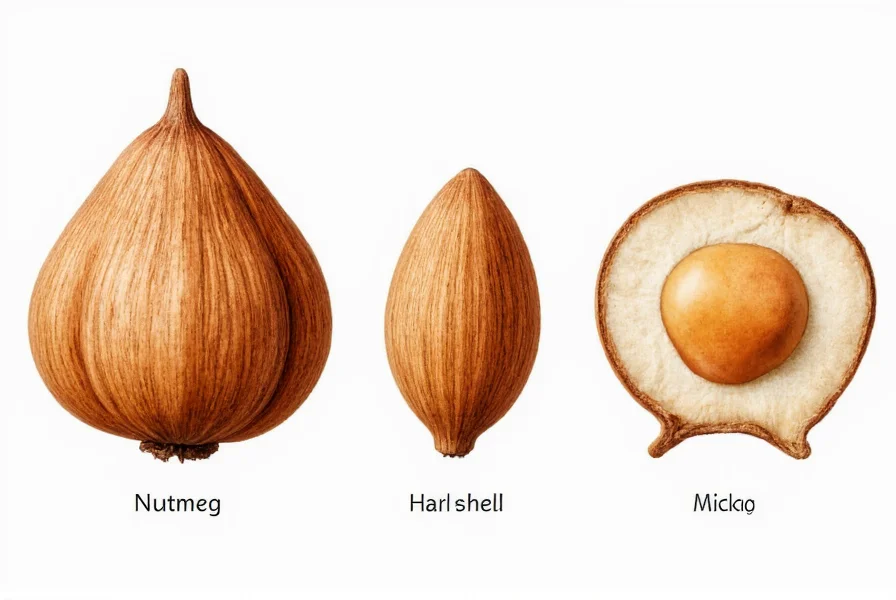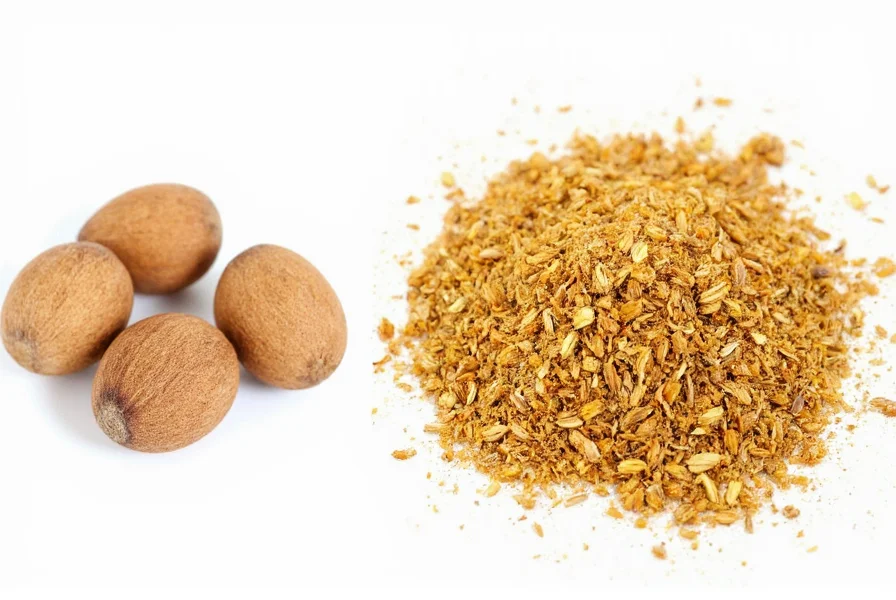Many home cooks and even some culinary professionals confuse nutmeg terminology, leading to misunderstandings about what part of the Myristica fragrans fruit is actually used as a spice. Understanding the precise anatomy of the nutmeg fruit prevents culinary mistakes and ensures proper usage of these valuable spices.
Anatomy of the Nutmeg Fruit: Beyond the Common Misconception
The nutmeg fruit grows on evergreen trees native to the Banda Islands in Indonesia. What most people don't realize is that the spice we call "nutmeg" comes from just one part of this complex fruit structure. The complete fruit consists of three distinct components:
- The fleshy outer fruit - Similar to an apricot, this yellowish fruit is sometimes used to make preserves but is not the source of nutmeg spice
- The hard shell - This woody outer layer encases the seed and is completely removed during processing; it has no culinary value
- The seed and its surrounding aril - This is where our spices originate
Inside the hard shell lies the valuable seed covered by a distinctive red membrane. This membrane is carefully removed and dried to become mace, while the seed itself is dried to become what we know as nutmeg.

Why Nutmeg Shell Isn't Used in Cooking
The actual nutmeg shell serves only as protective casing during the fruit's development. Unlike the flavorful seed and aromatic mace, the shell contains minimal volatile compounds that contribute to flavor. More importantly, the shell contains higher concentrations of myristicin and other compounds that can be toxic when consumed in significant quantities.
During commercial processing, workers crack open the ripe fruit to extract the seed with its surrounding aril. The hard shell is considered waste material and is discarded. Attempting to use the shell in cooking would yield little flavor while potentially introducing unpleasant bitterness and safety concerns.
Mace vs. Nutmeg: Understanding the Difference
Many people searching for "nutmeg shell" are actually looking for information about mace, which is frequently misunderstood. Here's how these two spices differ:
| Characteristic | Nutmeg (Seed) | Mace (Aril) |
|---|---|---|
| Origin | Hard seed inside the fruit | Red membrane surrounding the seed |
| Appearance | Brown, oval-shaped kernel | Orange-red, flattened pieces |
| Flavor Profile | Warm, nutty, slightly sweet | More delicate, citrusy, with higher pepper notes |
| Intensity | Milder flavor | Stronger, more potent (use ⅔ the amount of nutmeg) |
| Common Uses | Baked goods, cream sauces, potatoes | Fish dishes, light-colored sauces, pickling |
Safety Considerations for Nutmeg and Mace
Both nutmeg and mace contain myristicin, a compound that can cause adverse effects when consumed in large quantities (typically more than 1-2 teaspoons of ground nutmeg). The actual nutmeg shell contains even higher concentrations of these compounds, making it unsuitable for consumption.
When using either spice in cooking:
- Always use freshly grated nutmeg or mace for best flavor
- Store whole spices in airtight containers away from light
- Limited to ¼-½ teaspoon per recipe for most applications
- Avoid consuming raw nutmeg in large quantities

Culinary Applications: When to Use Mace Instead of Nutmeg
Understanding the difference between these spices allows chefs to make informed choices. Mace works particularly well in dishes where:
- You want spice flavor without darkening the color of light sauces or batters
- A more complex, slightly citrusy note would enhance the dish
- Preparing fish, chicken, or egg dishes that benefit from mace's delicate profile
- Creating delicate pastries where nutmeg might overpower other flavors
Professional chefs often keep both spices on hand, recognizing that while they come from the same fruit, they function as distinct ingredients with unique culinary properties. The confusion around "nutmeg shell" typically stems from not understanding that mace is the aril, not the shell itself.
Proper Storage and Usage Tips
To maximize flavor and shelf life of both spices:
- Buy whole whenever possible - ground versions lose potency quickly
- Store in airtight containers away from heat and light
- Grate directly into dishes just before serving for optimal flavor
- Use a microplane grater for the finest texture
- Replace whole spices after 2-3 years for best results
Common Misconceptions About Nutmeg Products
Several products capitalize on the confusion between nutmeg components:
- "Nutmeg shell powder" - Typically just lower-quality nutmeg or mace
- "Nutmeg husk tea" - Usually contains other ingredients as the shell isn't used
- "Nutmeg membrane extract" - Marketing term for mace extract
When purchasing products labeled with these terms, check the ingredient list carefully. Authentic nutmeg products will specify whether they contain Myristica fragrans seed (nutmeg) or aril (mace).
Conclusion: Clarifying the Nutmeg Terminology
The term "nutmeg shell" represents a common misunderstanding in spice terminology. The actual hard shell of the nutmeg fruit has no culinary application, while mace - often mistakenly called the shell - is the valuable aril surrounding the seed. Understanding this distinction helps home cooks and professionals make better ingredient choices and avoid potential safety issues.
When searching for information about nutmeg components, using precise terms like "mace vs nutmeg" or "nutmeg fruit anatomy" will yield more accurate results than searching for "nutmeg shell," which perpetuates the common misconception.











 浙公网安备
33010002000092号
浙公网安备
33010002000092号 浙B2-20120091-4
浙B2-20120091-4